The best movies on Max right now
Let's check out some of the great films—from Ghibli masterpieces to silent classics—Max has to offer
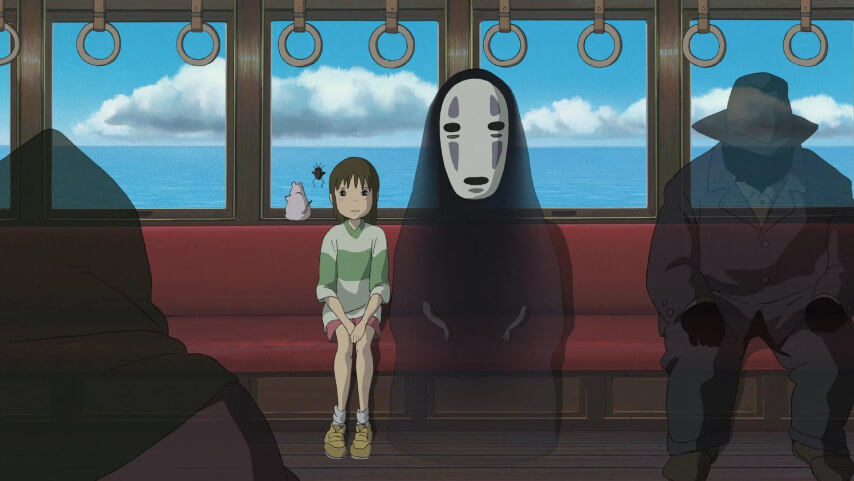
Now that we’re used to HBO Max shedding the best part of its name to become just Max, we can concentrate on what really matters: the movies. Max’s impressive library includes most films released by Warner Bros., along with HBO original movies, plus titles from other studios (like all the best animated films from Studio Ghibli). So before you spend hours mindlessly flipping through their various hubs and menus because you can’t decide what the hell to watch, here’s The A.V. Club’s rundown of the best films on Max.
This list was updated on September 1, 2024.
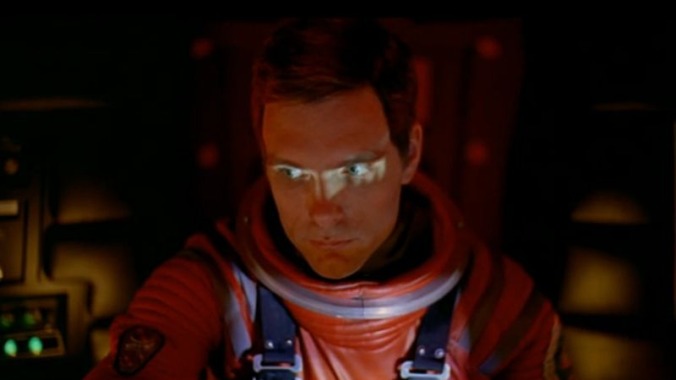
For decades, Stanley Kubrick’s 2001: A Space Odyssey has stood as a kind of primal mystery, a glimpse at forces beyond comprehension. Within film history, it serves, more or less, the same function that the vast alien monoliths serve in the movie itself. Here it was: This colossal monument to ambiguity, dropped into the middle of a late-’60s culture that must’ve found it baffling and terrifying. But those audiences reached out to touch 2001 anyway, and suddenly, all kinds of vast advancements sparked off. Special effects became headier, slicker, more immersive. Motion picture storytelling branched off into unexplored new dimensions. Mainstream film dove headlong into the psychedelic. [Tom Breihan]
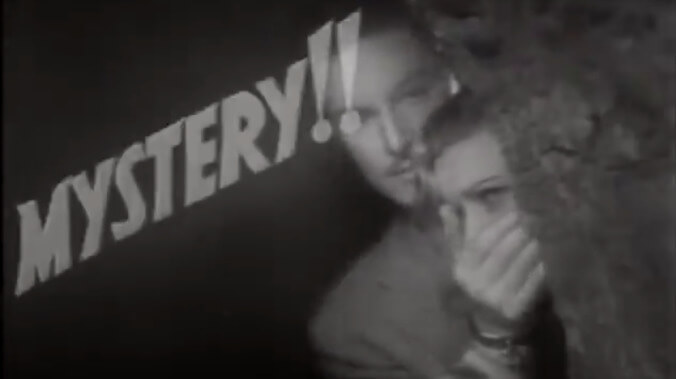
The McGuffin. The wrong man. An everyman hero who’s at once the pursuer and the pursued. All the classic elements of an Alfred Hitchcock movie are perfectly articulated in 1935’s The 39 Steps, which stands as both the culmination of his career to date in the UK and the genetic material for future masterpieces like Notorious and North By Northwest. Early efforts like the 1927 silent thriller The Lodger had asserted a visual style in line with the German Expressionists, and his 1938 follow-up The Lady Vanishes affirmed his gift for dry, drawing-room wit, but The 39 Steps represents the ultimate distillation of Hitchcock’s strengths. Robert Donat’s dash across the Scottish highlands may anticipate the large-scale pleasures of Cary Grant fleeing crop-dusters and scaling the face of Mount Rushmore, but the film has distinction beyond a mere warm-up. Infused with elements of screwball romantic comedy, it uses a tightly written spy story to explore issues of trust with maturity and cool sophistication. [Scott Tobias]
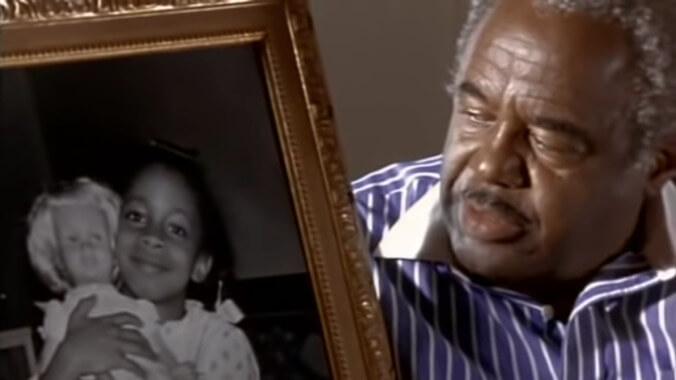
4 Little Girls, Spike Lee’s documentary about the 1963 bombing of the 16th Street Baptist Church in Birmingham, Alabama, opens with Joan Baez’s recording of “Birmingham Sunday” and the gravesites bearing the names of the four girls killed in that bombing. That’s all a lot of people know of the event, other than that it served as a turning point in the civil-rights movement, and Lee’s film attempts to correct that oversight. 4 Little Girls tells the story in full, with emphasis on the volatile environment leading up to the bombing. Martin Luther King called Birmingham “the most thoroughly segregated city in the United States,” and within it, the 16th Street Baptist Church played a key role in the mounting protests of the early ’60s. Bombing it was meant to strike a critical blow to the protesters, and part of the reason it didn’t can be found in the resilience evident in interviews with the victims’ families and other survivors. As emotional as most of them get, they also find a way to convey their still-strong dedication to the principles for which the four girls served as unfortunate martyrs. 4 Little Girls is an important act of historical preservation, a focused and effective film that brings back a dark, important moment in history with startling clarity. [Keith Phipps]
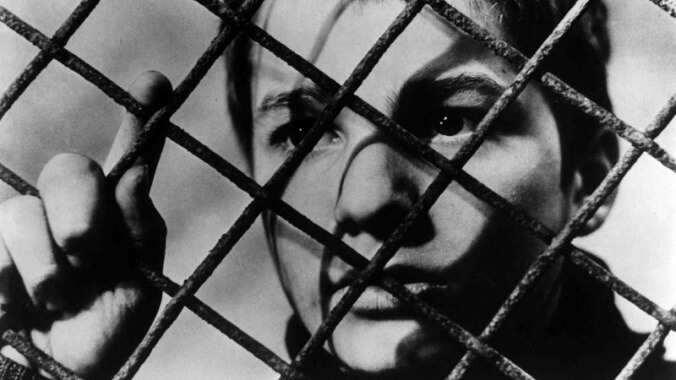
The 400 Blows became, for a time, a de facto mission statement for an entire movement. As it would happen, it also gave the world one of the most beloved recurring characters in the history of the movies. Over the course of five films (four features and one short) and two decades, François Truffaut affectionately chronicled the progress of his fictional alter ego, Antoine Doinel, whose teenage truancy eventually gives way to a reluctant adulthood flush with professional follies and romantic obsessions. The actor Jean-Pierre Léaud—who was a troublemaking eighth-grader himself when Truffaut cast him in The 400 Blows—would go on to become an emblem for the New Wave as a whole, embarking on a host of memorable collaborations not only with Truffaut but also with more formally adventurous and expressly political filmmakers like Jean-Luc Godard, Jacques Rivette, and Jean Eustache. [Benjamin Mercer]
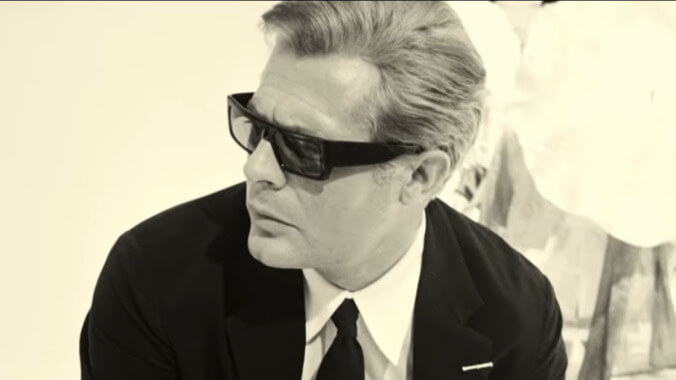
The title of Federico Fellini’s 8 1/2 refers to the number of titles in his filmography, and the nervous breakdown his alter ego, played by Marcello Mastroianni, suffers in the process of trying to make a new movie. 8 1/2 is understood as one of the great films about filmmaking, a vital and spontaneous expression of the anxiety and creative stasis that can grip even the most imaginative of artists. Yet it’s also tied unmistakably to a fear of death—just as Mastroianni’s ideas threaten to dissipate, and the pressures of playing ringmaster to a cinematic circus are too great to bear, his life could evaporate right along with it. The very existence of 8 1/2 gives Fellini no cause for alarm, since the crisis itself bears another kind of creative fruit, but the film is fraught with a tension and panic that couldn’t entirely be exorcised. Only few years later, Fellini spent a month in a nursing home after experiencing a real nervous breakdown. [Scott Tobias]
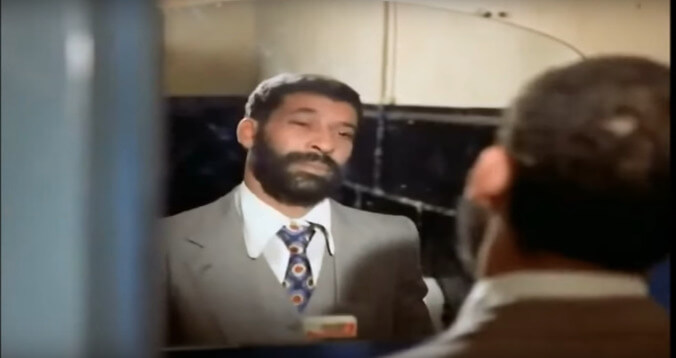
Made only two years after the calamitous 1972 Olympics in Munich, where Israeli athletes were taken hostage and later killed by Palestinian terrorists after a botched rescue attempt by German authorities, Ali: Fear Eats The Soul openly examines the racial tension between natives and Arab immigrants. In the opening scene, director Rainer Werner Fassbinder introduces a pair of absurdly mismatched dance partners: El Hedi ben Salem, a handsome Moroccan laborer in his 40s, and Brigitte Mira, a dowdy German housecleaner more than 20 years his senior. Ducking into a bar on a rainy night, Mira is shunned by the blonde bartender (Barbara Valentin) and the mostly Arab clientele, but Salem reaches out to her, in a gesture based less on attraction than defiance. Their relationship starts on a dare, but it grows on their shared loneliness and need for companionship, leading to a shotgun marriage that enrages Mira’s grown children and alienates her from her neighbors and coworkers. But just when the two seem cast off as victims, Fassbinder flips the entire premise on its head, showing how their bond relies on (and feeds off of) the same cruel machinations used to pry them apart. The radical turns in Ali’s second half are abrupt and disconcerting, yet they operate on the unshakable logic that no one can be fully extricated from the world around them; even goodhearted folks like Salem and Mira wind up perpetuating the conditions that exploit them. [Scott Tobias]
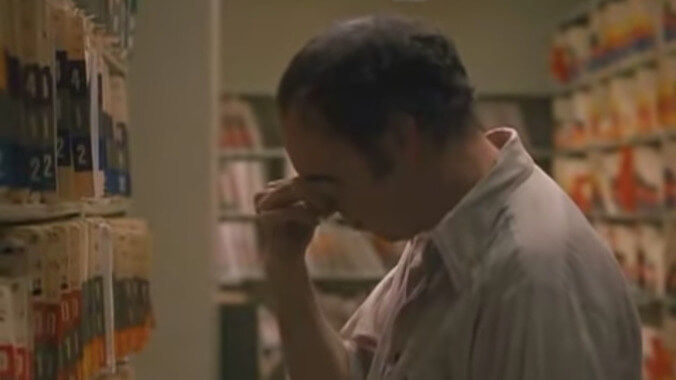
It’s hard to choose the more impressive achievement of Shari Springer Berman and Robert Pulcini’s big-screen adaptation of Harvey Pekar’s American Splendor comics: the assured, casually experimental blend of documentary, animation, and naturalist comedy, or the way Berman and Pulcini assemble 30 years of Pekar stories into one thematically consistent piece, incisively capturing his guiding principle that commoners have as much to say as kings… [Noel Murray]
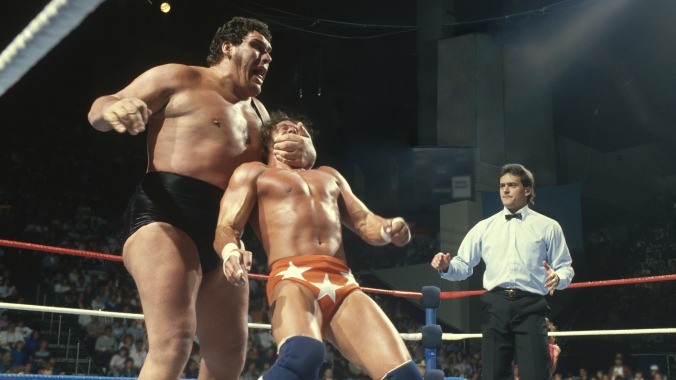
“Before there was CGI, there was Andre The Giant.” So says David Shoemaker, wrestling historian, trying to describe what it was like for audiences in the 1970s the first time they saw the enormous Frenchman André René Roussimoff, either in person or on their TV sets. As Shoemaker explains in Jason Hehir’s documentary Andre The Giant—debuting Tuesday night on HBO at 10 p.m. Eastern—when Roussimoff came to the United States, televised wrestling was still a regional business, with stars who mostly stayed within a small multi-state circuit. The sports’ fans might’ve seen pictures of André The Giant in a magazine, but they were unprepared for how impressive the man could be in the flesh. He was better than any special effect. Those who knew him personally have said that hanging out with him after an event was like palling around with folklore—sort of like being friends with Paul Bunyan. [Noel Murray]
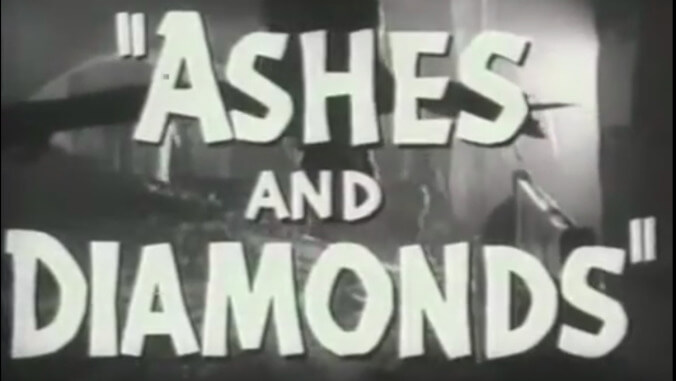
Remembered by many as “the Polish James Dean,” Zbigniew Cybulski won international fame in the role of an idealistic young resistance member who takes the post-war assignment of gunning down a mid-level Communist functionary. Wearing dark sunglasses that underline his cool nonchalance, Cybulski spends hours waiting for his target in a hotel, where he bides his time by flirting with a blonde bartender (Ewa Krzyzewska) who immediately captures his heart. Suddenly, his priorities are thrown into disarray: Does he continue to fight for a dubious cause, or abandon his post for love? During the spectacular climactic sequence, set against the celebratory fireworks display overhead, Ashes And Diamonds delivers a supremely ironic answer. [Scott Tobias]
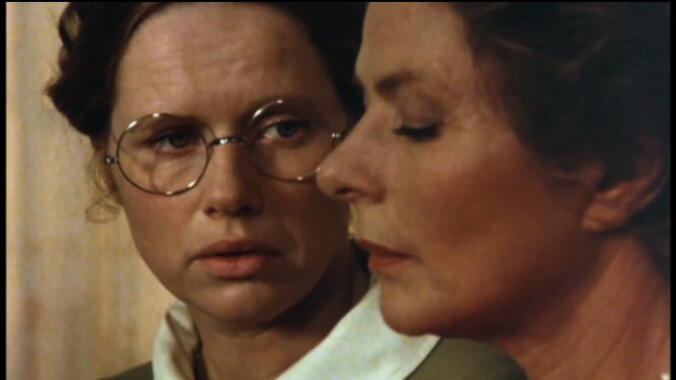
A chamber piece for a handful of actors, Autumn Sonata stars frequent Ingmar Bergman collaborator Liv Ullmann and first-time Bergman star Ingrid Bergman as a mother and daughter who reunite after seven years to spend a long, dark night turning over their differences. With cinematographer Sven Nykvist, the director turns the film’s theatrical elements—the soliloquies, the long exchanges—into virtues, creating a film that’s alternately warm, claustrophobic, and brutally raw, telling the story largely through long close-ups and close, two-character compositions. It doesn’t hurt that they’re given the remarkable performances of Ullmann and Ingrid Bergman to work with. [Keith Phipps]
The first time we see Frank Tassone, the beloved public-school administrator Hugh Jackman plays in Bad Education, he’s striding onto the stage of an auditorium to a roar of applause. It’s his night, a celebration of his achievements—though, as we’ll quickly come to see, he spends most days in the spotlight, too, basking in the admiration of colleagues, students, and parents alike. Frank, who puts the super in superintendent, is head of a Long Island school district that, under his stewardship, has reached the top of the national rankings. Wandering from meeting to meeting in his finely pressed suits, a warm grin perpetually plastered across his face, he has the poise (and popularity) of a Kennedy—and indeed, Frank approaches the job with a politician’s savvy, committing names and interests to memory. But the real key to his success may be that he actually gives a damn. In movie terms, it’s as if one of the carpe diem heroes of an inspirational-teacher drama rose through the ranks, spreading his zeal for education to the whole district. That, anyway, is how Frank would probably prefer to frame his story. Bad Education tells a different version, ripped from the headlines and shaped into something far removed from the genre of gifted classroom mentors and the young lives they touch. The real Tassone, as some may remember, was at the center of New York’s Roslyn Public Schools scandal, in which a couple of high-ranking administrators embezzled millions of dollars of taxpayer money. Screenwriter Mike Makowsky, who grew up in the community and went to a Rosyln school the year the financial fraud came to light, dramatizes this national news into an engrossing procedural of white-collar crime. Cooking the books may sound like dry subject matter, but the film gives it a jolt of psychological urgency by building a whole house-of-cards narrative around a character of compelling contradiction: a con artist who’s managed to square his genuine commitment to the community (and the future of its children) with his betrayal of it. [A.A. Dowd]
In a lot of ways, Batman represents fairly pedestrian blockbuster filmmaking. The pacing is slow, the plotting occasionally incoherent. Too many of the action scenes are people wearing black clothes fighting in the dark, and you can’t see shit. There are plenty of sharp, fun character moments, but the movie still feels like it’s lumbering along to its inevitable explosive conclusion—a problem that’s haunted superhero movies ever since. But the thing that makes the movie stand out—the thing that all the critics at the time immediately commented on—was how the movie looked. Because no movie had ever really looked like that before. [Tom Breihan]
To really enjoy Batman Returns, which is not exactly a difficult thing to do, you have to give yourself over to its triumphant silliness. Before a single word is spoken in the movie, we see an infant Penguin eat a cat as Pee-Wee Herman himself, Paul Reubens, takes a long, resigned drink. Selina Kyle, in her pre-Catwoman harried-secretary guise, has a giant pink-neon “hello there” sign in her apartment—something that could only exist so that she can, in her transformation, smash a couple of letters and turn it into “hell here.” When Christopher Walken’s Max Shreck meets his death by electrocution, he comes out looking like an Iron Maiden cover art. There is nothing about Batman Returns that even nods in the general direction of realism, and that’s why the movie is great. [Tom Breihan]
In The Batman, Matt Reeves’ slick, overlong, majestically moody superhero spectacular, Robert Pattinson really puts the goth into Gotham City’s chief protector. His eyes slathered in mascara like Robert Smith (or The Crow, another nocturnal winged avenger), this version of the DC crime fighter zips around town on a motorcycle to the non-diegetic accompaniment of Nirvana’s album-closing downer “Something In The Way.” He also narrates the film in hushed voiceover that teeters, gargoyle-like, over the edge of self-parody. “They think I’m hiding in the shadows,” he whispers. “But I am the shadows.” These musings sound like diary entries—and it turns out that’s exactly what they are. At last: a Batman who journals! The Batman is as much a plot machine as the Christopher Nolan movies (the exposition could be stacked into twisting skyscrapers), but it moves differently, crawling and slinking over its extended running time instead of racing through it like a bat out of hell. And if we didn’t exactly need another Batman movie, there’s a charm to seeing one relatively steeped in the language of the original medium… even if a part of that language is a portentousness suitable only for tortured costumed orphans or goth kids of all ages. [A.A. Dowd]
Are truth and objectivity sufficient to create a masterpiece? Some think so, certainly—The Battle Of Algiers regularly shows up on lists of the greatest war movies ever made (and sometimes shows up on lists of the greatest movies ever made, irrespective of genre). Dramatically, the film suffers a bit from the same shapelessness that afflicts biopics and other heavily fact-based pictures, registering as a succession of loosely connected events, rather than as a discrete object sculpted from the clay of history. Pontecorvo’s choice to mimic the visual aesthetic of documentaries—at which he succeeded so well that the original American distributor made a point of boasting that not a frame of newsreel footage appears—was both revolutionary and hugely influential; most of today’s roughhewn docudramas have some Algiers in their DNA. It’s that formal genius, along with Ennio Morricone’s anxious, staccato score, that truly endures, and will continue to do so long after heated debates about the phrase “radical Islam” have finally died. [Mike D’Angelo]
The historical mistreatment of Sergei Eisenstein’s agit-prop classic Battleship Potemkin demonstrates how movies made for express political purposes can be buffeted by the winds of change. Upon its release in 1925, Potemkin was hailed as a masterpiece, as much for the way it dramatized the emotions behind the communist revolution as for its innovative use of montage. But Eisenstein told the story of a sailors’ revolt maybe too well, with too much artistic detail. In a depressed pre-Nazi Germany, officials worried that the film would foment revolt among the military and police. In the Soviet Union, the powers that be gradually whittled away Eisenstein’s original vision by mandating the inclusion of more patriotic music, and the exclusion of quotes by disgraced political leaders. And in the U.S., unadulterated prints were hard to come by, since American distributors could only deal with European companies that had made their own alterations. [Noel Murray]
The Academy had no separate category to recognize foreign-language films until 1956, so it’s no surprise that Jean Cocteau’s visually striking magical romance Beauty And The Beast went unrecognized. Cocteau, who cut his teeth with such avant-garde fare as The Blood Of A Poet, elevates the classic tale of tormented Belle and cursed Beast by bathing every frame with Freudian imagery or otherworldly opulence. To quote the late Roger Ebert, “Blood Of A Poet was an art film made by a poet,” whereas, “Beauty And The Beast was a poetic film made by an artist.” [Leonardo Adrian Garcia]

Steven Soderbergh’s Behind The Candelabra is, like many Soderbergh films, made up of a great many things. There are elements of wry comedy here—particularly from a plastic surgeon played by Rob Lowe—just as there are heartbreaking moments of relationship drama, scenes where Scott (Matt Damon) and Liberace (Michael Douglas) tear each other’s throats out. Yet what’s most impressive about the film is how it creates a sustained argument about the progress of the gay rights movement in the United States. With no actual, legal connection between Scott and Liberace, the two are forced into ever more complicated convolutions, and when the relationship inevitably crumbles, Scott has no legal protection when the pianist takes everything. This is a story about two men who were in love, then gradually fell out of that love, but it’s also a story about how the lack of legal protection for them (as well as Liberace’s terror of how society would react if he were outed) hounded them every step of the way. It’s pitched between quiet, intimate scenes with Scott and “Lee,” as he likes to be called, lounging around, enjoying each other’s company, and that old woman’s stare, with everything that hides behind it. [Emily St. James]
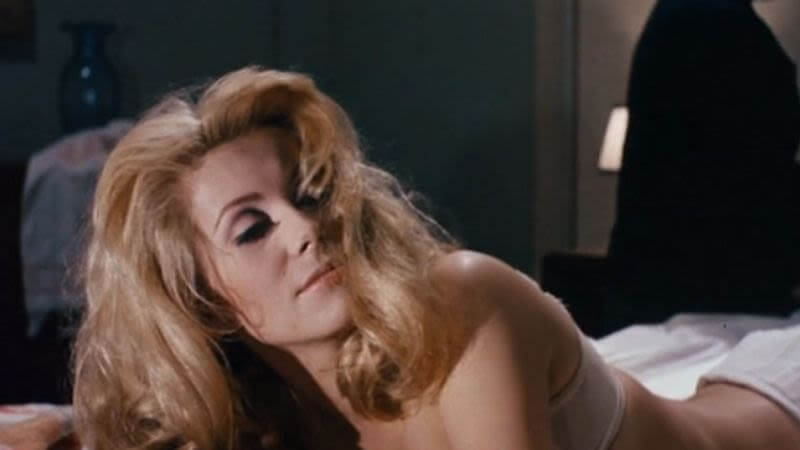
From the outside, Catherine Deneuve’s protagonist in Belle De Jour has everything a Parisian woman of the 1960s could want. She’s married to a comically handsome man (Jean Sorel) whose career as a surgeon allows her tremendous comfort and seemingly endless leisure. They vacation in luxury and enjoy each other’s company. Sex, however, is another matter. He wants it. She doesn’t. Or at least that isn’t all she wants. Directed by Luis Buñuel, Belle De Jour begins by dramatizing one of Deneuve’s fantasies. Riding in a carriage with Sorel, she rejects his advances. He responds by tying her to a tree, flogging her, then telling her coachmen to have their way with her. The expression on her face reveals that the degradation has stirred something deep inside her. Then she wakes up to the less-satisfying real world. [Keith Phipps]
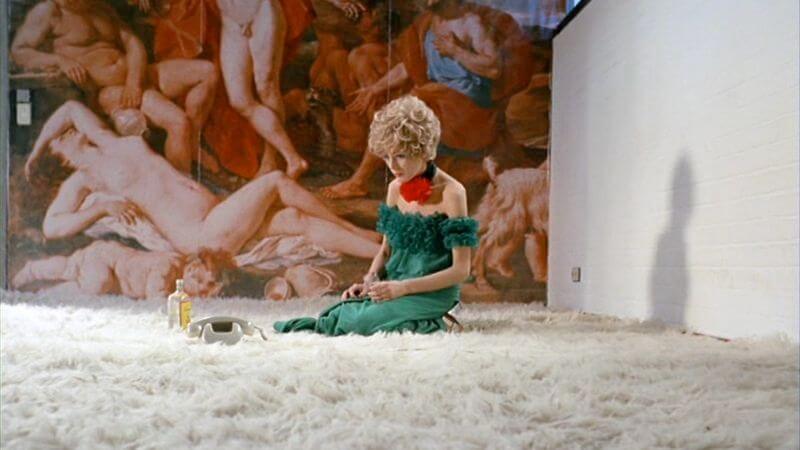
If one includes works made for German television, The Bitter Tears Of Petra Von Kant was Rainer Werner Fassbinder’s 13th feature… which is damn remarkable, given that he’d only gotten started three years earlier, in 1969, and was still busily working in theater at the time. Indeed, Petra Von Kant is adapted from Fassbinder’s stage production, which had premiered the year before; like the play, the movie is set entirely in its protagonist’s apartment, mostly within a few feet of her bed. Nonetheless, this is arguably Fassbinder’s first film to take full advantage of cinema’s unique qualities—so much so, in fact, that it’s sometimes difficult to imagine how it could have worked onstage. It functions reasonably well as a straightforward, agonized melodrama, but it’s first and foremost a master class—co-taught by famed cinematographer Michael Ballhaus (Goodfellas, The Fabulous Baker Boys, Quiz Show), who got his start with Fassbinder—in the dynamic visual use of a constricted space, and proof that a tiny budget is no excuse. [Mike D’Angelo]
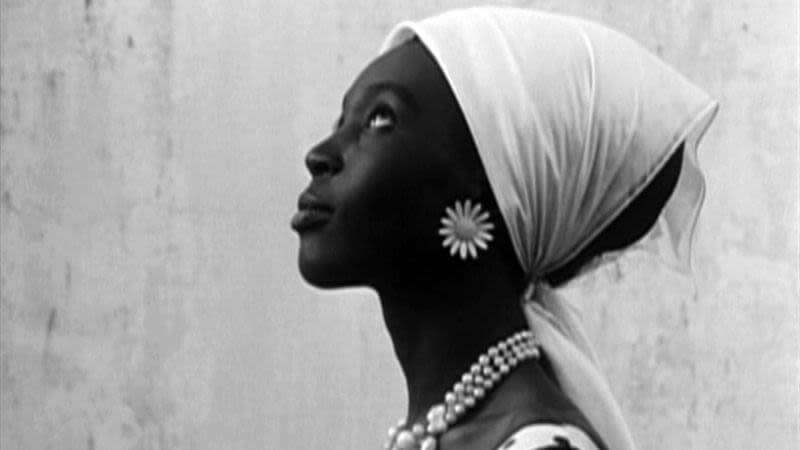
Ousmane Sembène’s debut feature, Black Girl, is commonly cited as the first major film to come out of Sub-Saharan Africa, despite the fact that much of the movie is set in France. Its place in film history has less to do with its production (which was French enough to qualify for France’s Prix Jean Vigo, which Black Girl won in 1966) than with its perspective. Black Girl was the first feature made in Senegal, and the first feature about black Africans to have been written and directed by a black African. No other national or cultural cinema started as confidently. The movie—about a young woman who takes a seemingly cushy job as maid and nanny to a French couple in Dakar, and then accompanies them back to France—is at once a humanist drama, a portrait of Senegalese life in the 1960s, a study of race relations in France, and a personal statement on post-colonial Africa’s relationship to Europe and the rest of the world. [Ignatiy Vishnevetsky]
In his memoir A Life In Movies, the late British director Michael Powell explained that after WWII, he became interested in the concept of the “composed film,” and began shaping his pictures to have the abstract emotional resonance of great music, rather than the plainness of narrative. His first clear nod in that direction was 1947’s Black Narcissus, a spiritual melodrama that climaxes in an exaggerated incident of violence which Powell assembled, he writes, as “an opera, in the sense that music, emotion, image, and voices all blended together into a new and splendid whole.” Black Narcissus was the 11th collaboration between Powell and screenwriter Emeric Pressburger, and the sixth of 12 films that the men would release under the production credit “The Archers.” It remains a rapturous, near-indescribable work of cinematic art, spun from a simple story about nuns who travel to the Himalayas to start a school and a hospital, only to have mountain winds and native mysticism weaken their confidence and their faith. [Noel Murray]
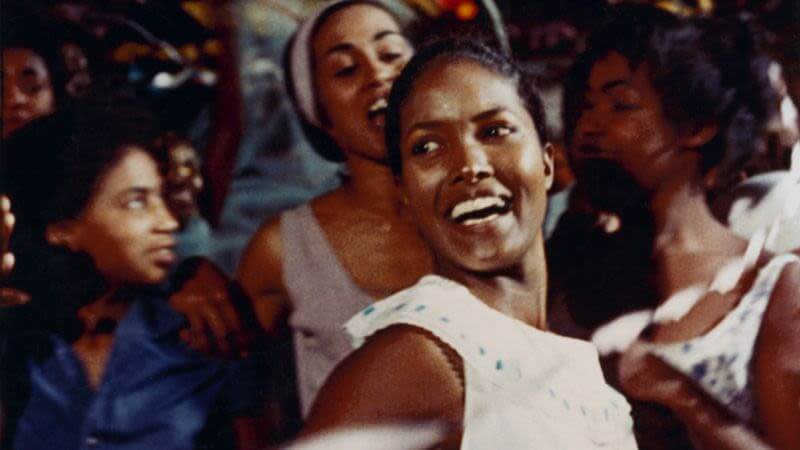
It isn’t often that a movie commences with a perfect summary of its own appeal. But that’s exactly what Black Orpheus does. Marcel Camus’ 1959 melodrama opens on a marble statue of its mythological namesake, a tableau of Greek tragedy set to the gentle strum of an acoustic ballad. But after no more than 10 seconds (and immediately following the appearance of the title), this black-and-white image seems to shatter into a hundred star-shaped shards. They fall away to reveal the film’s next and much more illustrative image: men smiling, dancing, and playing music under the Brazilian sun. The first shot prepares you for a funeral. The second one announces a celebration. [A.A. Dowd]
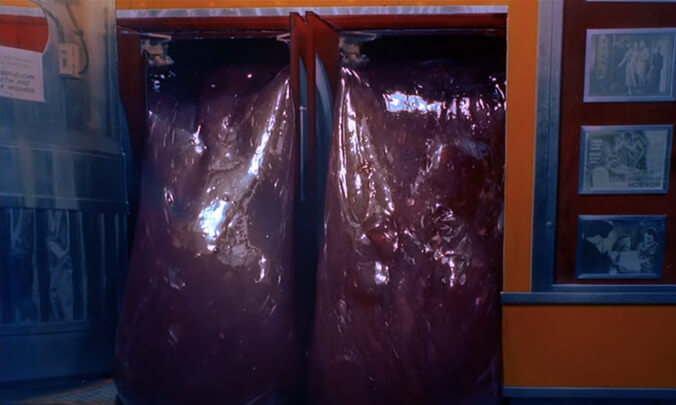
Whatever its flaws as a film, a none-too-scary monster chief among them, The Blob is a uniquely compelling monster movie. The decision to shoot in Technicolor, largely on real locations in Pennsylvania, invests it with a high-’50s feel money couldn’t buy. The remarkable seriousness the actors, particularly method disciple Steve McQueen, bring to the material makes the film difficult to dismiss as mere camp. So does a finale that unites the entire town, teens and grown-ups alike, in an all-metaphors-aside fight against an alien threat, a moment that seems to confirm historian Bruce Eder’s description of The Blob as “like watching some kind of collective home movie of who we were and who we thought we were.” Or maybe it’s simply the best film ever to pit hot-rodding teens against a mass of silicone. It delivers the goods any way you look at it. [Keith Phipps]
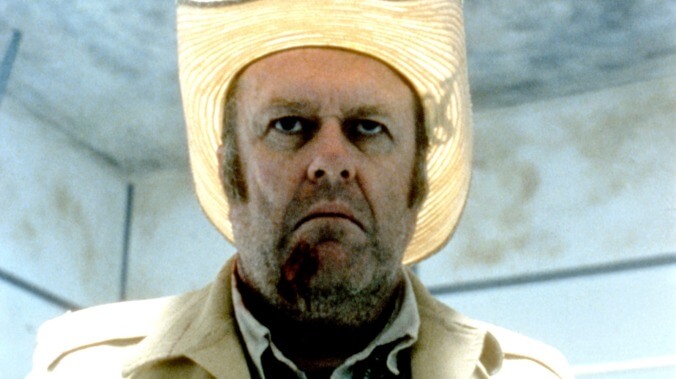
Imagine two brothers who’ve never set foot on a feature film set showing up on your doorstep and saying, “Hello, we’ve got this trailer, can we project it on your wall? Then maybe you’ll invest in our darkly comic thriller starring an actress you’ve never heard of.” Would you say no? If so, you just missed out on Blood Simple. This trailblazing neo-noir would be significant for its funding strategy alone, but it also launched the careers of Carter Burwell, Barry Sonnenfeld, Frances McDormand, and, yes, the Coen brothers. All off the strength of a trailer for a movie that didn’t exist yet. It boggles the mind. [Allison Shoemaker]
Herk Harvey is said to have directed more than 400 movies in his three decades of filmmaking. Almost all of them, however, were educational and industrial training films, which he shot, on time and under budget, for the Centron Corporation in Lawrence, Kansas. The chief exception—and Harvey’s only feature—was 1962’s Carnival Of Souls, an eerie, low-budget horror yarn that’s become a bona fide cult favorite in the half-century since it was first released. The film, about a church organist (Candace Hilligoss) haunted by leering specters after a car accident, approximates the feeling of a nightmare that won’t end. Both David Lynch and George Romero have cited it as an influence on their own early, shoestring shockers, while the twist ending anticipated several decades of climactic rug pulls. But like a lot of cult classics, Carnival Of Souls—a recent inductee of the Criterion Collection—was unappreciated in its own time. Audiences ignored the movie, the distributor went bankrupt, and Harvey returned to his day job, never to make a full-length film again. Centron’s gain was our loss; surely, there were better uses of the director’s talents than warning kids about the dangers of cheating. [A.A. Dowd]
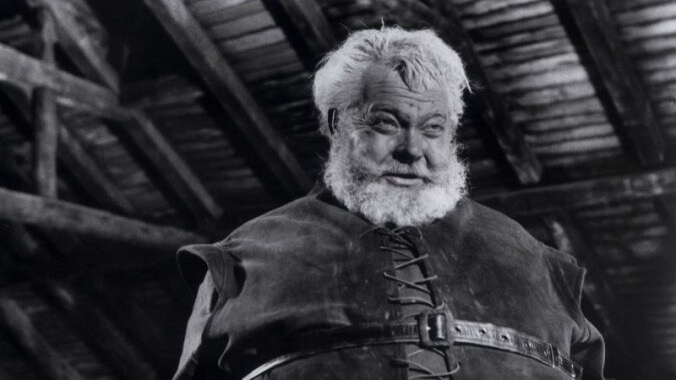
Cut and pasted from the texts of five different plays (plus snippets of Holinshed’s Chronicles, the Bard’s main source on English history), Chimes At Midnight puts larger-than-life John Falstaff, Shakespeare’s most popular comic role, center-stage, only to dwarf him with cathedral and castle interiors. Orson Welles made innovative use of low angles in his debut, Citizen Kane, reinventing ceilings as backdrops; here, in his final trip into the corridors of power, they seem so far above as to be unreachable. Even Chimes At Midnight’s brutal, celebrated Battle Of Shrewsbury sequence—a hurricane of medieval violence that has remained a key Hollywood reference point for decades—finds time to cut back to Falstaff, wobbling around in a suit of armor like a lost astronaut roaming the moonscape of history. A big chunk of Welles’ body of work could be divided up into movies about power (e.g. Citizen Kane, Macbeth) and movies about powerlessness (e.g. The Lady From Shanghai, The Trial), and Chimes At Midnight fits squarely into the latter category. [Ignatiy Vishnevetsky]

Federico Fellini favorite Marcello Mastroianni stars in Divorce Italian Style as a Sicilian baron undergoing a midlife crisis. He feels smothered by his wife Daniela Rocca, a lightly mustachioed woman with a witchy laugh and a ravenous sexual appetite, and he still sees himself as a desirable catch, able to turn young ladies’ heads with his wealth and good looks. Mastroianni is especially attracted to his teen cousin Stefania Sandrelli, but being Catholic, he can’t do much about it. His best bet is to catch his wife with another man, kill her, and plead “crime of passion.” So he goes looking for a man who might want to sleep with Rocca. That plot description could fit farce or noir, and Divorce Italian Style is a little of both, with the noir elements coming through Mastroianni’s whispered flashback narration and dark fantasies. [Noel Murray]

The key statement made by Jim Jarmusch’s 1984 masterpiece Stranger Than Paradise, one which defined and resonated through independent cinema for years afterward, was that American films don’t have to be defined by propulsive stories, or even by dynamic characters. It was achievement enough simply to evoke a small corner of the world as specifically and flavorfully as possible, preferably one that the audience rarely gets a chance to see. In this respect, Jarmusch’s superb 1986 follow-up Down By Law can be described as many things–a minimalist fairytale, a modern twist on ’30s prison dramas, an existential comedy–but it’s memorable first and foremost as a richly textured look at old New Orleans and the enchanted bayou surrounding it. With music and songs by stars John Lurie and Tom Waits, and stark black-and-white photography by the great Robby Müller (Paris, Texas), the film breaks off from the tourists on Bourbon Street and finds inspiration in the city’s decaying underbelly–”a sad and beautiful world,” as Waits neatly poeticizes it. [Scott Tobias]
What Denis Villeneuve’s sleek new adaptation [of Frank Herbert’s novel] gets right, immediately, is the galactic, millennia-old scale: gigantic architecture, humongous spacecraft, vast landscapes, big ugly sandworms. No other recent film has looked quite so huge. It’s worth noting here that the actual onscreen title of Villeneuve’s film is Dune: Part One. The script (by Villeneuve, Jon Spaihts, and Eric Roth) covers only the first half of Herbert’s novel, and the result ultimately feels like half of a movie. Fortunately, it’s an ambitious one, made with the same stylistic intelligence that Villeneuve brought to Arrival and Blade Runner 2049, his earlier forays into smart sci-fi. Having come a long way from his arthouse roots, he has emerged as one of our most reliable and talented directors of suspense and effects. [Ignatiy Vishnevetsky]
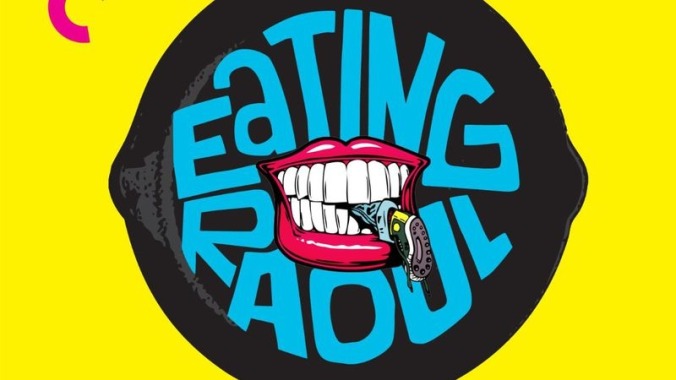
For Mary and Paul Bland, the protagonists of Eating Raoul, the world never stops offending. A sexless but happily married couple played by former Warhol star Mary Woronov and her frequent on-screen partner Paul Bartel—the film’s director and co-writer with Richard Blackburn—the Blands dream of opening an old-fashioned country restaurant, but can’t seem to get ahead, held back by bills and unexpected unemployment. (Turns out the corner liquor store employing Bartel didn’t need a healthy supply of expensive French wine.) So they’re stuck instead in their tastefully retro apartment in the middle of one of Los Angeles’ most tasteless corners, surrounded by swingers who, gasp, even invite them to loosen up and join their party. But when one violates their home, and attempts to violate Woronov, they kill him, pick his pockets, and hit on an idea: Why not take out an ad in a sleazy local newspaper to attract sexual perverts and repeat the process until they have money enough to get out? After all, who’s going to miss a few swingers anyway? [Keith Phipps]
When it was released on American screens, Georges Franju’s elegant 1960 horror film Eyes Without A Face was re-titled The Horror Chamber Of Dr. Faustus and paired with something called The Manster, the macabre tale of a half-man/half-beast with two heads. Beyond the fact that Franju’s film includes neither a horror chamber nor a villain named Dr. Faustus, the double feature must have seemed curious to the drive-in crowd, who had to wonder what these two films could possibly have in common. Yet Eyes Without A Face owes more to the American horror tradition than to French art cinema, which was slow to acknowledge the genre’s legitimacy, much less its potential. Caught between cultures, the film was greeted with scandal in its home country and mistreatment in the U.S., but it endures as a gorgeous fusion of opposing sensibilities, a lyrical monster movie with visceral thrills and moments of unforgettable visual poetry. [Scott Tobias]
After a brief, unhappy tenure directing Hollywood projects, John Cassavetes spent the rest of his career working in the fragments of that shattered mold. Financed by acting jobs in films like The Dirty Dozen and Rosemary’s Baby, Faces premièred in 1968 and introduced the landscape that Cassavetes would return to again and again: the unquiet inner lives of those new houses that sprung up in the wake of WWII. John Marley and Lynn Carlin star as a couple testing the limits of their unhappy marriage, he with a call girl (Cassavetes’ wife, Gena Rowlands), she with free-spirited gigolo Seymour Cassel. Partly improvised, partly scripted, and partly somewhere between the two, Cassavetes’ films have frequently been likened to jazz. Faces bears the stamp of its particular era’s jazz; it trades in long stretches of chaos, even ugliness, which produce unexpected passages of grace and beauty. As punishing as that ugliness can be, the graceful bits stick in the memory. [Keith Phipps]
Adapting a graphic novel by Tetsurô Sayama and Chizuru Takahashi, Goro Miyazaki and his screenwriting team (which includes his father, Hayao Miyazaki) focus on the ramifications of a country in transition from the ancient to the modern. From Up On Poppy Hill evokes the charm of creaky old wooden floors, and shows its heroes standing up for longstanding cultural traditions in the face of a society eager to show a new face to the world for the 1964 Olympics. The film is also beautiful in a distinctly Ghibli way, distinguished by dappled light, soft pastels, and the slow-but-constant motion of a port town, with its steep cliff-set roads and ships drifting by. It’s all lovely and sweet, and while this story might’ve been just as engaging in live action, Miyazaki’s animation does clear away the extraneous detail, re-creating the world of 50 years ago and instilling it with the poignancy of a family snapshot. [Noel Murray]
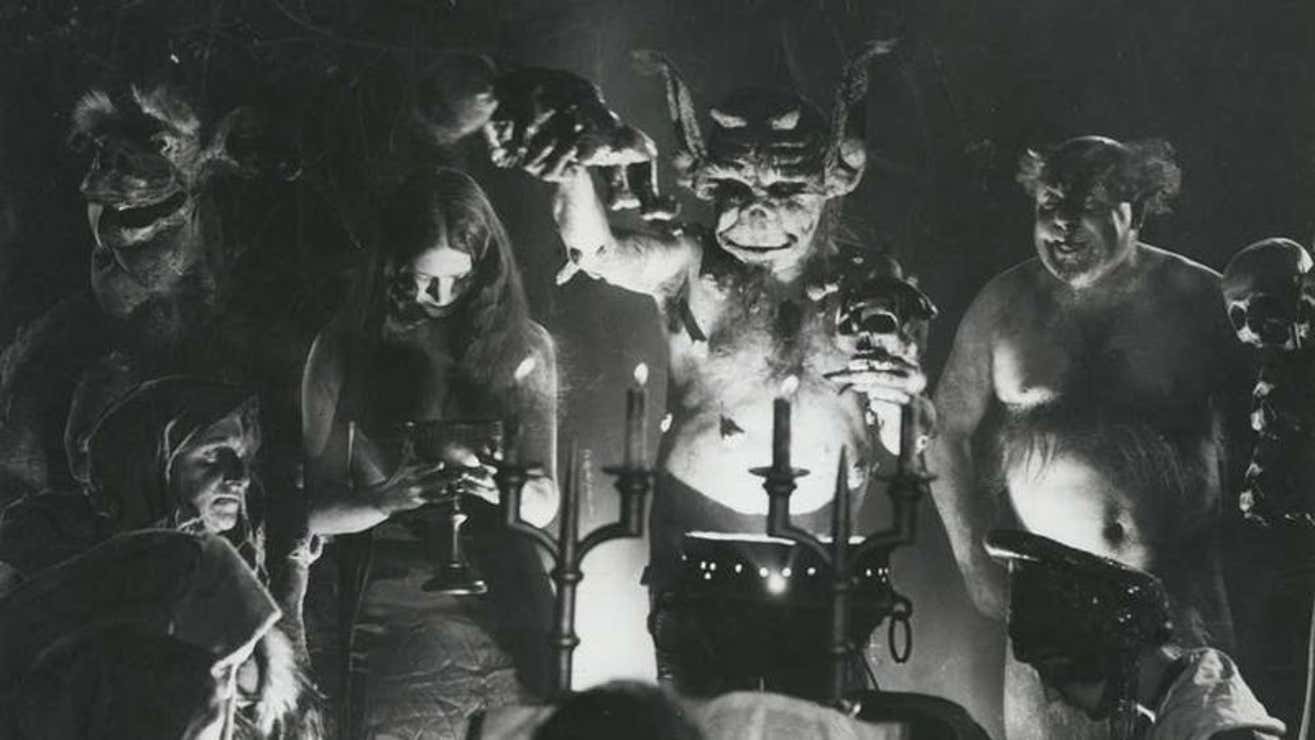
Like a Hieronymus Bosch painting come to malevolent life, Häxan: Witchcraft Through The Ages remains a silent-era stunner of profane imagery and feverish socio-historical commentary. Danish director Benjamin Christensen’s 1922 film (co-financed by a Swedish production company) combines animation, non-fiction, and fictional elements to investigate the history of witchcraft, and the persecution of women over the course of centuries. That topic is given gloriously demented visual life by Christensen, who drenches his black-and-white vignettes in dark shadows, brimstone fire and smoke, and all manner of unholy sights, from grave robbing and cannibalism to the Devil’s worshippers pledging allegiance to their horned master by kissing his naked ass. [Nick Shager]
When Star Wars fans start researching the movie’s origins, one of the first things they discover is that George Lucas was heavily influenced by Akira Kurosawa’s 1958 adventure The Hidden Fortress, which involves a princess whose kingdom has been destroyed, a dashing rogue who’s trying to protect her, and two bumbling idiots—one tall, one short. To some extent, the similarity between the films has been exaggerated, even by Lucas himself; he’s credited the two peasants as the model for C-3PO and R2-D2, for example, but the same basic dynamic can be found in Abbott and Costello, Laurel and Hardy, etc. There’s no Luke Skywalker equivalent in Hidden Fortress, and the dashing rogue’s motives are far more noble than Han Solo’s. Formally, all Lucas borrowed from Kurosawa were his frequent horizontal wipes. Nonetheless, the association is beneficial, because The Hidden Fortress is one of the best possible gateways into foreign films. It isn’t Kurosawa’s best picture, by any means, but it’s almost certainly his most fun. [Mike D’Angelo]
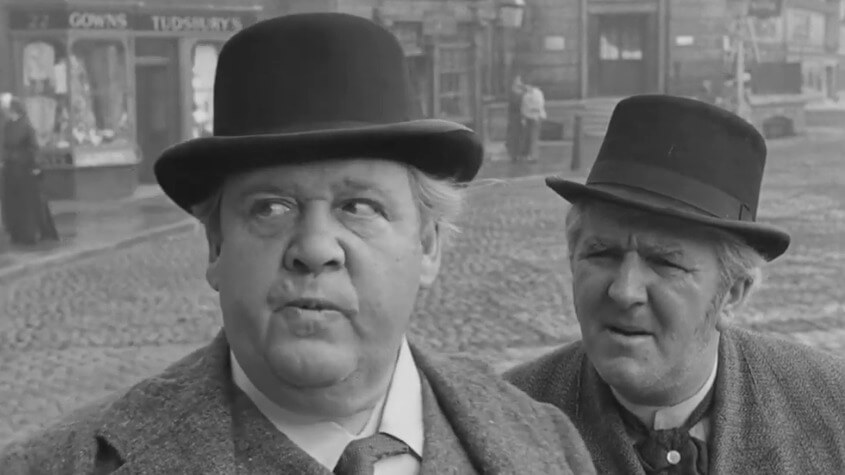
David Lean is best known for his epic late-period historical dramas exploring the psychological contradictions of outsized figures, like Lawrence Of Arabia, The Bridge On The River Kwai, and Doctor Zhivago. But his directorial career began with eminently British literary adaptations filmed on a smaller scale—Noël Coward’s This Happy Breed, Brief Encounter,and Blithe Spirit; Charles Dickens’ Oliver Twist and Great Expectations; and an adaptation of Harold Brighouse’s perennially popular theatrical comedy Hobson’s Choice. Released in 1954, Hobson’s Choice is the last of Lean’s black-and-white films; the following year, he directed Summertime (also originally a play) in glorious Technicolor, and then the huge spectacles began. As befits a film that marks this transition, Hobson’s Choice embodies the very best of the intimate Lean, while anticipating the startling clarity of vision he would later bring to the North African desert and the Russian steppes. [Donna Bowman]
Leonard Kastle was a professional opera composer whose friend suggested he write a screenplay about the infamous Lonely Hearts Killers, lovers who swindled and murdered several women in the 1940s. Kastle not only had his screenplay produced, he was also was tapped to direct, replacing the studio’s original choice, a filmmaker fired for going over budget. Who knows how the movie would have turned out had that original director—a young Martin Scorsese—kept his job. But Kastle’s film was well regarded and continues to be. It wasn’t much of a box office success, however, so he happily returned to the world of opera, afterwards claiming, “I never made a bad film.” [Mike Vago]
1977’s House is a classic of what writer Chuck Stevens calls “le cinéma du WTF?!,” and it’s one of our favorites of the genre here at The A.V. Club. (We even inducted it into the New Cult Canon a few years back.) Written by director Nobuhiko Obayashi based on one of his young daughter’s nightmares, House is like an episode of Scooby-Doo directed by Richard Lester while he was utterly zonked out on psychedelics. Or maybe it’s like a ghost story told around the campfire by a precocious preteen who’s also out of her mind on psychedelics. You know what, maybe just watch the trailer. [Katie Rife]
Akira Kurosawa may be best remembered for his samurai and Shakespearean epics, but the legendary Japanese director never made a film more assured and affecting than Ikiru, his 1952 tale of a Tokyo bureaucrat struggling to confront his own mortality and the legacy he will leave behind. Diagnosed with fatal cancer, Watanabe (the magnificent Takashi Shimura) searches for something that will give his previously meaningless life some purpose—a quest that is stymied by relatives who care little about him (save for the inheritance they will eventually receive), but aided by his relationship with a younger, enthusiastic coworker. In her, Watanabe sees a life beyond the stacks of paper that routinely crowd his desk, in an office where nothing ever seems to get done and no one seems to care very much about it. [Nick Schager]
In The Heights’ slice-of-life portraiture suggests a less ambitious undertaking than Hamilton, but it tells a story as expansive as that of a fledgling nation. Through both musicals, [Lin-Manuel] Miranda demonstrates how ingrained people of color are in this country’s history: Before he reimagined a pivotal chapter in United States history with Black and Latinx actors, the acclaimed multi-hyphenate threw a spotlight on marginalized people’s fight against displacement. At the core of In The Heights, on stage or screen, is movement—as migration, as immigration, as dancing, as code-switching, as the shift from friends to lovers. [Danette Chavez]
In terms of relating this history, Judas And The Black Messiah is relatively straightforward. It’s framed by the familiar device of a character giving an interview, and anchored by that most quintessential of human experiences: a love story. Director Shaka King takes a novelistic approach to the material, concentrating less on the relationship between the two title characters and more on what was going on in Chicago around the time FBI informant William O’Neal (LaKeith Stanfield) infiltrated the Illinois Black Panther Party in 1968. Those hoping for a climactic confrontation between the film’s exciting lead actors won’t find that here, because, well, it didn’t go down like that in real life. But there’s still plenty of dramatic friction to be found. As Illinois party chairman Fred Hampton, Daniel Kaluuya is the sun around which everything else in Judas And The Black Messiah revolves. Hampton recruits new members, unites warring factions, and, with his charisma and radical platform, scares the bejesus out of FBI director J. Edgar Hoover (Martin Sheen). The activist really comes alive in front of a crowd, as Kaluuya channels the searing intensity he brought to Steve McQueen’s Widows to more righteous but equally electrifying ends. [Katie Rife]
Fans of Hayao Miyazaki’s darker movies (Spirited Away and Princess Mononoke chief among them) may find Kiki bland and child-safe; of all the movies he’s written and directed, its features the least conflict and calamity. The worst that happens to the eponymous young witch is that she becomes dangerously depressed and momentarily stops believing in herself: For the most part, her effervescent energy and determination keep her spirits high as she enthusiastically explores her new town and new life. [Tasha Robinson]
A former Facebook content moderator, Angela Childs (Zoë Kravitz) now works as a “voicestream interpreter” for fictional Amygdala (cutely named after the part of the brain responsible for threat assessment), responding to issues with commands given to an Alexa-style assistant called Kimi. “I’m here!” chirps Kimi (in the voice of Betsy Brantley, Soderbergh’s ex-wife) when summoned, and there’s a very relatable running joke in which it constantly responds, unwanted, to casual mentions of its name during FaceTime conversations. Things get considerably less amusing, however, when one of the streams sent to Angela for analysis turns out to be a snatch of loud music (Massive Attack’s “Inertia Creeps,” another nice touch) beneath which a woman’s scream can be faintly heard… [Mike D’Angelo]
Masaki Kobayashi’s 1964 anthology film Kwaidan (the title translates simply as Ghost Stories) isn’t the kind of movie you watch when you want to be scared out of your wits. None of its four tales of the supernatural goes for the jugular, and several of them deliberately telegraph their chilling conclusion, undermining any suspense. Kobayashi, who adapted all four from collections of Japanese folk tales assembled by Lafcadio Hearn, expected local audiences to be familiar with the basic narratives, the same way that an American audience would know what’s coming in a filmed version of, say, “The Hook.” What makes Kwaidan singular is the combination of Kobayashi’s almost maddeningly patient, methodical approach to drama (as exemplified by 1962’s Harakiri, also available via Criterion) and his expressionistic experiments with color, sound, and theatrical artifice. [Mike D’Angelo]
Bresson had a thing for 19th-century Russian literature, having adapted Dostoevsky twice; for his final film, L’Argent, he took inspiration from Tolstoy, transposing the writer’s posthumously published novella The Forged Coupon into modern-day France. The film is non-stop movement; it starts with the handing off of a counterfeit 500-franc note and then rigorously tracks its repercussions, ending with one of the most unsettling murder scenes in film history. Like Bresson’s earlier masterpiece Au Hasard Balthazar, it’s one of those movies that seems to contain a complete vision of the world, informed by a fully formed sense of what filmmaking can and should do—which seems all the more remarkable when you consider that it runs just over 80 minutes. [Ignatiy Vishnevetsky]
Voted the 21st greatest film of all time in the latest Sight & Sound poll, Michelangelo Antonioni’s L’Avventura is a mystery without a resolution. The film begins with Anna (Lea Massari) trying to find her way through a garden. She’s a bit lost emotionally, too. She’s about to reunite with her boyfriend, Sandro (Gabriele Ferzetti), after a month apart, joining him for a yachting trip around the Aeolian Islands with friends. But Anna’s anxious. While swimming she cries shark, and Sandro dramatically swims to her side. She confesses to her best friend, Claudia (Monica Vitti), that she made up the shark. But why? They all wander an island for a bit. Anna tells Sandro she wants to separate permanently. And then, not a half hour in, a dissolve passes the time and erases Anna from the plot. What happened to her? Sandro and Claudia spend the rest of the movie searching for her, but there’s never any answer. [Brandon Nowalk]
The first time we see La Notte’s two protagonists—a long-married couple, Giovanni and Lidia Pontano—they’re so distant from the camera as to seem insignificant. Even those who know that the movie stars Marcello Mastroianni and Jeanne Moreau might have to squint and lean forward, wondering if that’s them. As in his previous film, the groundbreaking L’Avventura, director Michelangelo Antonioni shows more interest in environments than in characters; from 1960 onward, the people in his films are defined less by their words, or even their actions, than by their physical location in the world and the frame. Not for nothing is the film’s opening credits sequence a vertiginous journey down the face of a skyscraper, shifting halfway through to an angle that shows the urban sprawl of Milan in the background. [Mike D’Angelo]

A pulpy, violent tale of revenge based on a comic serialized in a popular Playboy-esque men’s magazine, Lady Snowblood didn’t have to be art. But director Toshiya Fujita treated it as such, utilizing a complicated flashback structure and expressionistic cinematography to tell the story of Yuki Kashima, a highly skilled assassin trained from birth to find and kill the men (and woman) responsible for murdering her father and raping her mother before she was born. Her nickname, shurayukihime (“carnage snow princess”), is a pun on the Japanese name for Snow White, shirayukihime (“white snow princess”), reflecting her cold, grim beauty. Yuki found her ideal embodiment in Meiko Kaji, early icon of female action stardom and ultimate ice queen, whose huge, deep-set eyes reflect both burning hatred and heartbreaking reluctance. Elegantly dispatching her enemies with a flick of the wrist amid fountains of tempera-paint blood spray—this is one of those movies where blood doesn’t run or drip, it sprays—she’s both human and divine. [Katie Rife]
Neophytes approaching Alfred Hitchhock’s work for the first time should consider skipping straight to 1938’s The Lady Vanishes, which functions as a point-by-point primer to his touchstones: The twisty plot assembles seemingly irrelevant pieces into a tense whole. Innovative cinematography foregrounds important objects, letting them dominate the frame, while elaborate trick shots give a setbound drama a sense of vast space. There’s the signature director’s cameo, the irritating yet adorable central couple, the unhurried slice-of-life conversations, and the glamorous verve. Above all, The Lady Vanishes contains one of cinema’s most iconically Hitchcockian sequences, as two characters plop down right in front of a key clue to a mystery, then completely miss it for excruciating minutes on end. Nothing’s happening onscreen but banal chatter, yet the tension is unbearable. [Tasha Robinson]
The title of François Truffaut’s 1980 film The Last Metro comes from the importance of catching the final train of the night for Parisians living under a Nazi-imposed curfew during World War II. While it’s set in a theater where finishing a performance on time takes on a new urgency, Paris’ public transportation doesn’t otherwise factor directly into the plot. In fact, Truffaut limits the action almost entirely to the theater, the block of Montmarte outside its doors, and a few nearby locations. But it’s still the best possible title for the film, connecting directly to the constant state of anxiety of life during wartime under an oppressive regime. The city kept a superficial normality, but one constantly punctuated by the reminder that the enemy had arrived, the neighbors might be collaborators, and survival might demand unthinkable compromises from everyone. [Keith Phipps]
Several of the seemingly endless supply of movies about Batman have made note of the superhero’s duality. But the likes of Batman Returns and Batman Forever focus primarily on the duality of Bruce Wayne and his cowled, crimefighting alter ego. Batman has plenty of other dualities, some of which are almost paradoxical: He’s a fearsome, lone vigilante who has often been surrounded by a cast of colorful friends and family; he frequently appears in dark, gritty stories that are just as often consumed and beloved by children; and he’s an object of audience wish fulfillment who spends a lot of time being obsessive and miserable. These are aspects that The Lego Batman Movie touches upon, using its irreverence for the character to formulate an original take on him. [Jesse Hassenger]
In condensing Tolkien’s book to feature length, Jackson and his screenwriters do the necessary pruning while still remaining faithful to the text. Pared down to its Cliffs Notes essence, the story moves forward at a relentless pace, occasionally sacrificing ambience for speed. But only the most expansive imagination could dream up a spectacle of such eye-popping proportions, with Jackson and his technicians constructing kingdoms and monsters with the innovation and joy of top-flight Ray Harryhausens. Setting vast digital armies against towering backdrops, the battle sequences have the visceral kick expected from the director of Dead Alive, as Wood and his motley militia hack through foes like zombies at the business end of a lawnmower. The Fellowship Of The Ring ends with a cliffhanger, but unlike the first Harry Potter movie, its rote annual competitor, it should leave viewers anxious to know what happens next. [Scott Tobias]
To live up to expectations, The Two Towers only had to be as good as its predecessor–and, astoundingly, it’s better. That’s not simply a matter of exposition giving way to action, although the film has plenty, as soulful hobbits Elijah Wood and Sean Astin make their way toward Mordor, friends Billy Boyd and Dominic Monaghan find unlikely allies deep in a forest, and the dwarf/elf/human team of John Rhys-Davies, Orlando Bloom, and Viggo Mortensen attempts to defend a struggling kingdom from the forces of Christopher Lee. What makes Towers so staggering is the way it brings the full scope of Jackson’s adaptation into focus. Without missing a beat in three hours, the film shifts from epic to lyrical and back. It portrays a harrowingly intense battle one moment, then pauses for a father’s grief over his son’s death the next. It shows in frightening detail the engines of war, then links those engines to the bloodshed they exact and the ecological destruction that made them possible. What Fellowship suggested, Towers elucidates. It’s thrilling as swords clash and arrows fly, but it also never abandons the underlying sadness of Tolkien’s world, in which each victory only forestalls the transition to a meaner age. (And, for all the attendant technophobia, it’s another technical masterpiece. Gollum, voiced by Andy Serkis, may qualify as the first fully fleshed-out performance by a CGI effect.) [Keith Phipps]
The Fellowship Of The Ring proved that Peter Jackson and his co-screenwriters, Fran Walsh and Philippa Boyens, were more than capable of bringing Tolkien to the screen with an eye toward large-scale spectacle as well as a respect for the original story, characters, and themes. The Two Towers did it one better. Ratcheting up the intensity on every level, it took the series to the same place as Tolkien’s books: the realm of shared cultural myth. Jackson doesn’t buckle under the burden of winding it down with The Return Of The King, either; in fact, he lets the weightiness define the film. As Frodo (Elijah Wood), Sam (Sean Astin), and the treacherous Gollum (a CGI Andy Serkis) progress toward destroying the ring, while Aragorn (Viggo Mortensen), Gandalf (Ian McKellen), and the Fellowship’s other surviving members mount a defense against the evil Sauron, every gesture conveys a significance emphasized by Jackson’s slow, portentous approach. In the end, the director pays off the time viewers invested in the first two films with a climax that places equal emphasis on both Wood’s personal struggle and an army-of-millions battle, with a denouement that gives a proper sendoff to characters who have become something like old friends. [Keith Phipps]

Though still potent, the shocking-at-the-time 1992 satire/mockumentary Man Bites Dog, from Belgian co-directors and stars Rémy Belvaux, André Bonzel, and Benoît Poelvoorde, may have slightly less impact now, given the similar and even nastier provocations that followed. But its vérité treatment of a preening serial killer cagily predicts the current era of reality TV, where hollow fame-seekers get their 15 minutes and the camera eggs them on, turning their lives into a sick form of performance art. While its title is taken from journalism—referring to news favoring the sensational (“man bites dog”) over the everyday (“dog bites man”)—Man Bites Dog isn’t really a comment on media so much as filmmaking itself, and the way it forces moral compromises from people both behind the camera and in front of the screen. It’s a sick piece of work—I felt like a heel for watching it, yet I couldn’t look away, either. [Scott Tobias]
For its first 45 minutes or so, The Matrix Resurrections plays like Lana Wachowski’s version of Wes Craven’s New Nightmare. In the latter film, Heather Langenkamp played a version of herself, an actress reluctantly returning for a Nightmare On Elm Street sequel that blurs the lines separating reality, fiction, and dreams. Now, Keanu Reeves is not playing “Keanu Reeves” in The Matrix Resurrections. But the mind-bending meta dimension is similar—enhanced, even. This is a Matrix movie, after all… [Katie Rife]
Moonage Daydream is a documentary about David Bowie that does all it can to avoid being a typical documentary—and it succeeds. It isn’t a cradle-to-grave investigation of the performer’s life, even though most of it follows chronological order. It isn’t a concert film, even though there is a lot footage of him on stage. All facts about the man come straight from the horse’s mouth, via old clips, yet half of them contradict one another. Still, you come away feeling that you saw a side of this beloved artist you never knew about before. It’s quite a feat. Directed Brett Morgen’s steadfastness in refusing to offer context for some (most!) of these visual counterpoints is, in this critic’s opinion, a panacea against boring documentaries. It goes further, with spasmodic trips through associative images. An old interview of Bowie talking about the art of performance (offering details of the Ziggy Stardust persona) inserts clips from Metropolis, Mickey Mouse, Buster Keaton, cheesy ’50s sci fi, and actual images from outer space into the blender. It’s great because it’s set to those cool Mick Ronson guitar licks, and, like the entire film itself, it always finds a groove. [Jordan Hoffman]
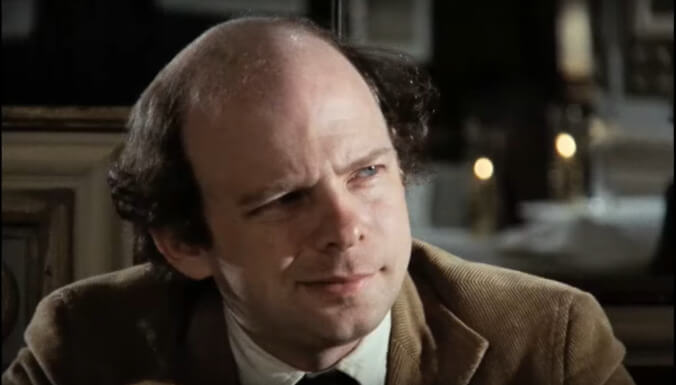
“Obviously something terrible had happened to Andre,” Wallace Shawn concludes after hearing reports about an old friend’s strange behavior toward the beginning of My Dinner With Andre. Once an acclaimed director of experimental theater, Andre Gregory spent years globetrotting and returned a changed man, someone who might go on about talking to the trees, or be seen weeping on street corners. As the film opens, Shawn has reluctantly agreed to catch up with him over dinner. Joining him at an upscale, just slightly forbidding restaurant, Shawn finds Gregory relentlessly upbeat, at least on the surface, and listens to his tales of super-fringe acting workshops, travels in the Sahara, a piece of performance art that involved being buried alive, and other strange adventures. After listening politely, Shawn replies. And that, in short, is My Dinner With Andre, an arthouse hit in 1981 built around a conversation between old friends and collaborators playing themselves, directed with dining-room intimacy by Louis Malle. [Keith Phipps]
American anime connoisseurs were hip to Hayao Miyazaki even when his imaginative, epic adventures were only available on the bootleg market. But average moviegoers (or, more accurately, video renters) first encountered Miyazaki via My Neighbor Totoro, an atypical and arguably non-ideal way to meet the master. Compared to the breathtaking action sequences and elaborate fantasy landscapes of Miyazaki’s early features (not to mention subsequent films like Princess Mononoke and Spirited Away), the genteel, languid Totoro seems at first slight, and even soporific. The sliver of a story—about two girls who move to a small village with their father while their mother recovers from a life-threatening illness—never gets past first gear, and the heroines’ few encounters with the mystical forest spirit Totoro hardly justify the movie’s title. Yet My Neighbor Totoro may be the most enduring entry in Miyazaki’s impressive filmography, because it’s so particular about the nuances of human behavior and emotion. The movie stands up to re-watching, gaining in profundity. [Noel Murray]
Nausicaä Of The Valley Of The Wind was one of Miyazaki’s earliest efforts; he started it as a long-running comic epic, but in 1984, he produced a two-hour animated version. The visuals are dated by comparison with his more recent works, but all the Miyazaki hallmarks are in place: rapturous explorations of natural vistas, a fascination with flight and flying machines, and a spunky female lead out to change the world, or at least hold her corner of it together through sheer love. Nausicaä is the princess of a rural valley that lives at peace on the edge of a deadly fungal wasteland, until a ship carrying a weapon from a bygone industrial age crash-lands nearby. When warriors from a far country come to retrieve the artifact, their invasion draws Nausicaä and her people into a sprawling political conflict. Part epic adventure, part environmental tract, part early testing ground for the themes and characters of Princess Mononoke, Nausicaä is in some ways a grim and serious film, but it mixes a sweet optimism into its horror-filled lessons. [Tasha Robinson]
To get what makes Isao Takahata’s 1991 classic Only Yesterday so special, look at the pineapple scene. Based on an autobiographical manga series by author Hotaru Okamoto (with art by Yuuko Tone), the movie follows a 27-year-old Tokyo woman named Taeko, who takes a vacation in the country in 1982. Throughout the trip, she thinks back to 1966, when she was a fifth grader. In one of those memories, her family buys its first-ever fresh pineapple, and saves it for Sunday dinner, so that it’ll be more special. But the fruit isn’t as soft or sweet as the canned kind, so everyone heaves a disappointed sigh and gives their slices to Taeko, who gamely keeps eating, determined to enjoy something she’d been looking forward to all week. Only Yesterday is animated, but rarely cartoony, in either its design or its storytelling. Most of the movie consists of moments as memorable and as elliptical as the one with the pineapple. Taeko remembers the awkwardness of pre-teen crushes, and the fiercely fought student council debates over lunchroom rules, and that time that she flunked a fractions test and overheard her mother say that she’s “not a normal kid.” These vignettes aren’t meant to be funny, per se. They’re supposed to be real—or at least as real as any drawings can be. [Noel Murray]
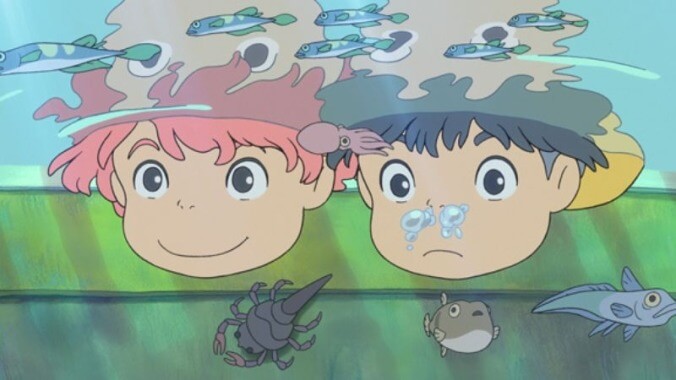
When Disney released its take on Hans Christian Andersen’s short story “The Little Mermaid” back in 1989, some purists griped that in excising most of the story’s agony and tragedy, Disney lost the story’s heart. Those purists won’t be any more comfortable with Ponyo, another animated take on the story, this time from Japanese writer-director Hayao Miyazaki. It’s aimed at particularly young audiences—in the Miyazaki oeuvre, it’s much closer to My Neighbor Totoro than Spirited Away or Princess Mononoke—and it barely has conflict, let alone a sense of menace or threat. It’s essentially a stroll through a fantastically detailed pastel world, in which the plot is little more than an excuse for Miyazaki to dive into a world teeming with colorful (and sometimes prehistoric) life. Disney’s generally respectful English dub, per usual, populates the story with famous names: Miley Cyrus’ little sister Noah voices the titular character, a willful fish-child who escapes her human-hating magician father (Liam Neeson) and treks to land, where she bonds with Sosuke, a 5-year-old boy voiced by the Jonas Brothers’ younger sibling Frankie Jonas. A surfeit of wild magic activated in the wrong place and time turns Ponyo human and reunites her with Sosuke, while also returning the already lively ocean around Sosuke’s home to the Devonian age, with gigantic, ancient fish-ancestors sporting in the waves. Tina Fey and Matt Damon round out the cast as Sosuke’s parents, but their role is limited in a story that’s mostly about the wonders of being young enough to unquestioningly accept every new surprise that life has to offer. [Tasha Robinson]
A hero’s mythical journey begins when Ashitaka (Billy Crudup), a prince in feudal Japan, is infected by a giant-boar-turned-demon-monster and sets out to find the evil source responsible. His adventures lead him to Iron Town, an industrial fortress presided over by Lady Eboshi (Minnie Driver), which strips the forest of its vital resources in order to manufacture weapons. This draws the wrath of the wolf gods and the mysterious title character (Claire Danes), leading to a literal battle between man and nature. Miyazaki’s message leaves little to the imagination, but his animation offers plenty of sustenance, especially when he silences the expository dialogue and lets his rapturous images speak for themselves. Highlighted by a sparkling, translucent Forest Spirit that only emerges at night, tiny skeletal creatures with clicking swivel-heads, and a truly magical denouement, Princess Mononoke is still a formidable achievement, if not a resounding success. [Scott Tobias]
Much like a slightly older-skewed version of My Neighbor Totoro, The Secret World Of Arrietty proceeds through most of its story with little sense of urgency, even when its excitable protagonist is dashing around her giant-sized world at top speed. Ghibli co-head Hayao Miyazaki (writer-director of Totoro, Spirited Away, and many other Ghibli projects) passed on directorial duties for Arrietty to veteran Ghibli animator Hiromasa Yonebayashi, but collaborated on the script, which clearly shows Miyazaki’s storytelling sensibilities. Arrietty is a typical Miyazaki heroine, equal parts innocent cheer, bluster, and submerged melancholy. She’s small enough to use a straight pin for a sword—and enough of a dashing romantic to enjoy that image—but it’s telling that the story never drives her to use her weapon on a living being. Her enemies are generally more abstract, and in no way vulnerable to stabbing. [Tasha Robinson]
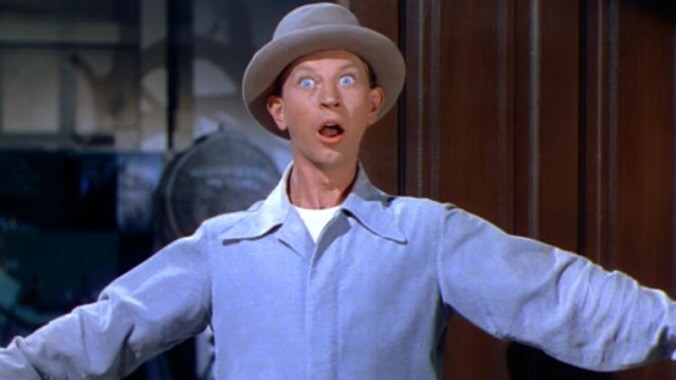
Singin’ In The Rain defies an auteurist reading. As the film’s star, co-director, and co-choreographer, Gene Kelly would seem like a likely candidate for authorship, but the fact that Kelly shares the last two roles with Stanley Donen reveals the film’s collaborative nature. Similarly, songwriter-turned-producer Arthur Freed could rightly be singled out for his part in its creation, since he came up with its concept of a film that would showcase the songs he’d co-written with Nacio Herb Brown. Finally, screenwriters Betty Comden and Adolph Green can claim much of the credit for Singin’ In The Rain’s success, since they turned a mercenary assignment into an enduring work of art. Ultimately, however, as the audio commentary for the double-disc Singin’ DVD suggests, the film represented a triumph of the studio system rather than the genius of a single powerful vision. Faced with the unenviable task of building a movie around Brown and Freed’s dated songs, Comden and Green hit upon the idea of making the film a nostalgic period piece, a move that allowed them to gently send up the songs’ Tin Pan Alley corniness while reveling in their simple power. Set during film’s awkward transition from silence to sound, Singin’ stars Kelly as a vaudevillian turned movie star whose successful series of films with Jean Hagen seems doomed to end with the arrival of sound; Hagen’s abrasive, squeaky voice suddenly becomes a problem when audiences demand to hear as well as see their idols. Caught in the angry tide of shifting public tastes, the studio behind Kelly and Hagen’s latest film decides to make it a sound picture and then a musical, and fresh-faced ingenue Debbie Reynolds is enlisted to overdub Hagen’s lines. Escapism raised to the level of art, Singin’ In The Rain inventively satirizes the illusions of the filmmaking process while celebrating their life-affirming joy. [Nathan Rabin]
After writing and directing the 1997 animated epic Princess Mononoke, Japanese filmmaker Hayao Miyazaki announced that he was planning to retire. Thank goodness he changed his mind. Spirited Away is a wonderful encore, marked by the painstaking attention to detail and artful balance between terror and joy that make his work unique. Spirited Away centers on Chihiro, a sullen, fearful Japanese girl whose parents are moving so far out into the country that they predict they’ll have to drive to the next town just to shop. While traveling to their new home, they discover an abandoned, disintegrating theme park, which they cheerfully explore in spite of Chihiro’s shrill protests. Suddenly, a boy approaches her and commands her to leave before nightfall. But before she can gather her wayward parents and escape, night does fall, in a breathtakingly eerie sequence that almost subsumes Chihiro’s danger with its technical achievement. Chihiro is trapped in the spirit world, and in order to save herself, her parents, and eventually her new friend, she has to come to terms with herself and her unwitting captors. Gradually, in a series of almost episodic adventures, she learns to be brave and face up to her responsibilities to herself and the people she loves. The baseline material is fairly standard stuff for a child’s adventure story, but the complex trappings and the shape of that story are uniquely Miyazaki. [Tasha Robinson]
David Ayer’s widely panned Suicide Squad often felt like it was trying to give DC its own Guardians Of The Galaxy, complete with mismatched scumbag cavalry and classic-rock needle drops. So it’s fitting that the sequel should fall to James Gunn, actual writer and director of the Guardians films, who signed on after crosstown rival Marvel (temporarily) fired him in light of some unearthed tweets. And it’s not so surprising that Gunn redeems the floundering franchise with a gory and uproariously funny R-rated follow-up that makes good on the promise of its premise. Margot Robbie’s Harley Quinn is among a handful of old characters reunited; the sprawling ensemble of new characters are played by Idris Elba, John Cena, Daniela Melchior, David Dastmalchian, Sylvester Stallone, and many more. Fair warning: No reformed supervillain is safe in a comic-book movie this gleefully fatalistic. [The A.V. Club]
GET A.V.CLUB RIGHT IN YOUR INBOX
Pop culture obsessives writing for the pop culture obsessed.